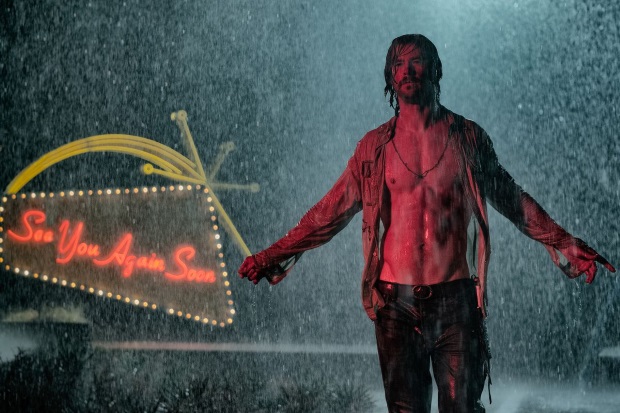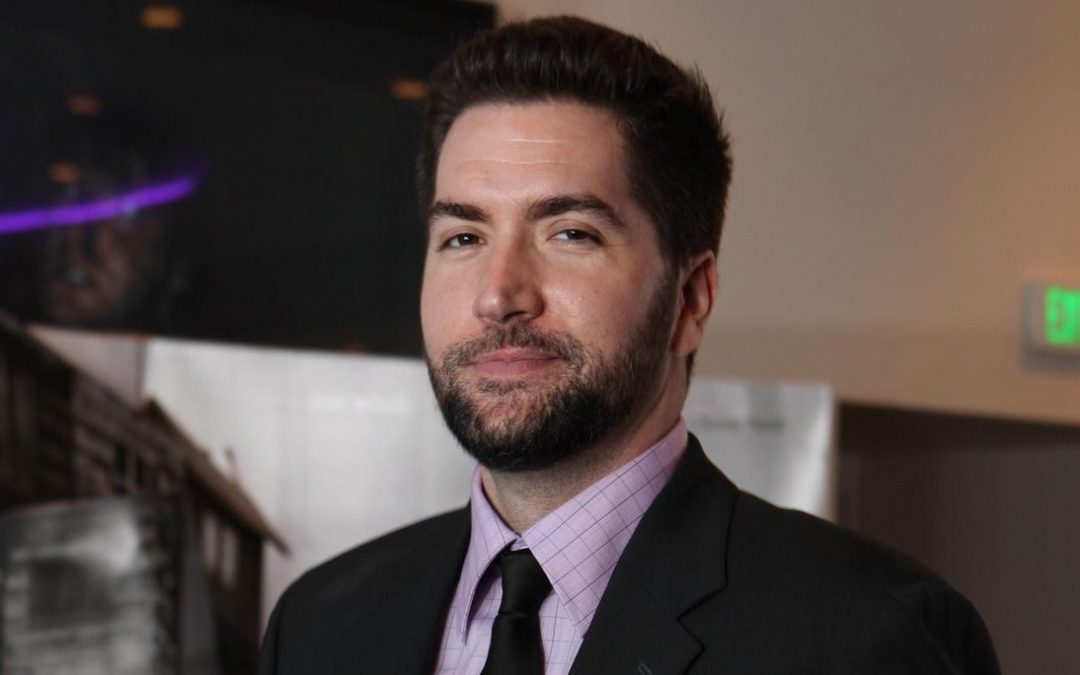Drew Goddard occupies a space in pop culture that’s very hard to enter on purpose. Having worked with some of the best known names in Hollywood including JJ Abrams and Joss Whedon early on in his career, he is still most known for writing and directing meta horror-comedy Cabin In The Woods, as well as penning Cloverfield and currently serving as executive producer on shows such as Daredevil and The Good Place.
Now he’s returning to cinema screens with Bad Times At The El Royale, and he spoke to Den of Geek about the film, his influences and working with Chris Hemsworth again.
“I’m fond of describing the film as a love letter to the crime thriller,” Goddard said. “The basic idea behind the film was that I’ve always loved crime fiction and crime cinema and I wanted to take a stab at playing around in that space.”
Much like Cabin in The Woods, El Royale manages to draw attention to its genre conventions before subverting audience expectations, with the director wanting to introduce the characters as archetypes before revealing them for who they really are over the course of the movie. To do this properly, he would need an excellent group of actors.
He continued: “The way ideas work with me is that there’s no one bolt of lightning but a bunch of little ideas. I love the idea of a hotel, and of the first act being one big scene where the characters are all checking in. That struck me very early.
“I wanted to work with actors and play around with a big ensemble cast because, at my core, I love artists and watching artists work. With this cast I had the opportunity to assemble the cast of my dreams.”
Because there’s so much talent in front of the camera, Goddard was able to let his characters lead the story, incorporating various scenes in which they simply talk to each other one on one.
“For me this movie at its core is about empathy,” he said. “It’s about these characters and treating them as people. The way I wanted to show that was to allow them to talk, and not in movie terms where every sentence is about advancing the plot or stating their emotion, but allowing you to get to know them. The movie trains the audience to see that a lot of the drama comes from conversation.”
(pic)
Despite the prevalence of Chris Hemsworth’s naked torso on the promotional materials for Bad Times At The El Royale, it’s actually Tony winner and first-time film actress Cynthia Erivo (Darlene) who provides the viewer’s entry point into the story.
“I’ve always liked to see stories that treat their characters as though they could all be the star of the movie, and they’re behaving as though they’re the protagonist,” he said. “As I was working on the story Darlene kept coming to the forefront, and I thought it would be great to find a face in the casting process that wasn’t as familiar to audiences. That would make it part of the point.
“I wanted to the audience to have preconceived notions of all of these characters – there’s a reason they’re so archetypical when you first meet them, because I want people to think they understand them.”

And on Hemsworth, who Goddard also worked with on Cabin In The Woods back in 2012, the director claims he is “exactly the same person” as when he auditioned all of those years ago.
Goddard previously worked on Golden Globe-winning The Martian (which also landed Goddard a Oscar nomination for Best Adapted Screenplay), which he said was one of the reasons for going much smaller and more intimate for his next project.
“The Martian was a global movie taking place over years, so I wanted to go the opposite direction and go more contained,” he said. “I get excited about doing things that are different.”
One of the big selling points for Bad Times At The El Royale is its mid-budget status, then, standing out in a sea of sequels, reboots and blockbusters. But the myth that studios don’t want to make original content anymore is false, according to the director, and the road to getting the film to screens may not have been as rocky as you might expect.
He said: “The truth is that studios want product, and they want to make movies. I think we can sometimes self-edit ourselves a bit when we say nobody wants to make these movies. That has not been my experience. They realise that we have to keep making new movies in addition to sequels and remakes, because otherwise we’ll have nothing left. In this particular case the wind was at my back, and I’m very lucky and grateful that it was.”
And it probably helped that the themes and subject matter seemed oddly prescient, which Goddard started to discover as he conducted his research.
“It was interesting to find that the rhetoric of the 1960s was very similar to the rhetoric of today. That suggests to me that ideas of toxic masculinity, power, paranoia and the exploitation of people for gain are nothing new and are evils that we have dealt with for years and years.”
As such, the director wanted the audience to make up their own minds about some of the things the film raises, he said, treating the viewer as an “active participant” in the story.
Goddard said: “The movie is about questions both literal and existential, and there were certain questions I thought would be more powerful left open ended. You’re constantly trying to find that right balance, and I feel like the film answers what it needs to. I trust the audience to fill in the blanks with their own experience.
“The movie seems complicated but at its core it’s really just a story about people.”
Bad Times At The El Royale is in UK cinemas now.

